
Enterprise decision-makers, budget-wielding executives, and other VIPs ignore 99% of marketing.
They won’t budge with dry outreach or generic messaging.
In this guide, I’ll break down advanced, actionable ABM tactics for hard to reach audiences that most experts recommend.
I have discusses it all: from how to use tools to nail your target account list (TAL) to what to do if you’re unsure about the prospect’s address (for direct mail/gifting purposes), to how to accurately measure and attribute the pipeline with ZenABM.
Read on…
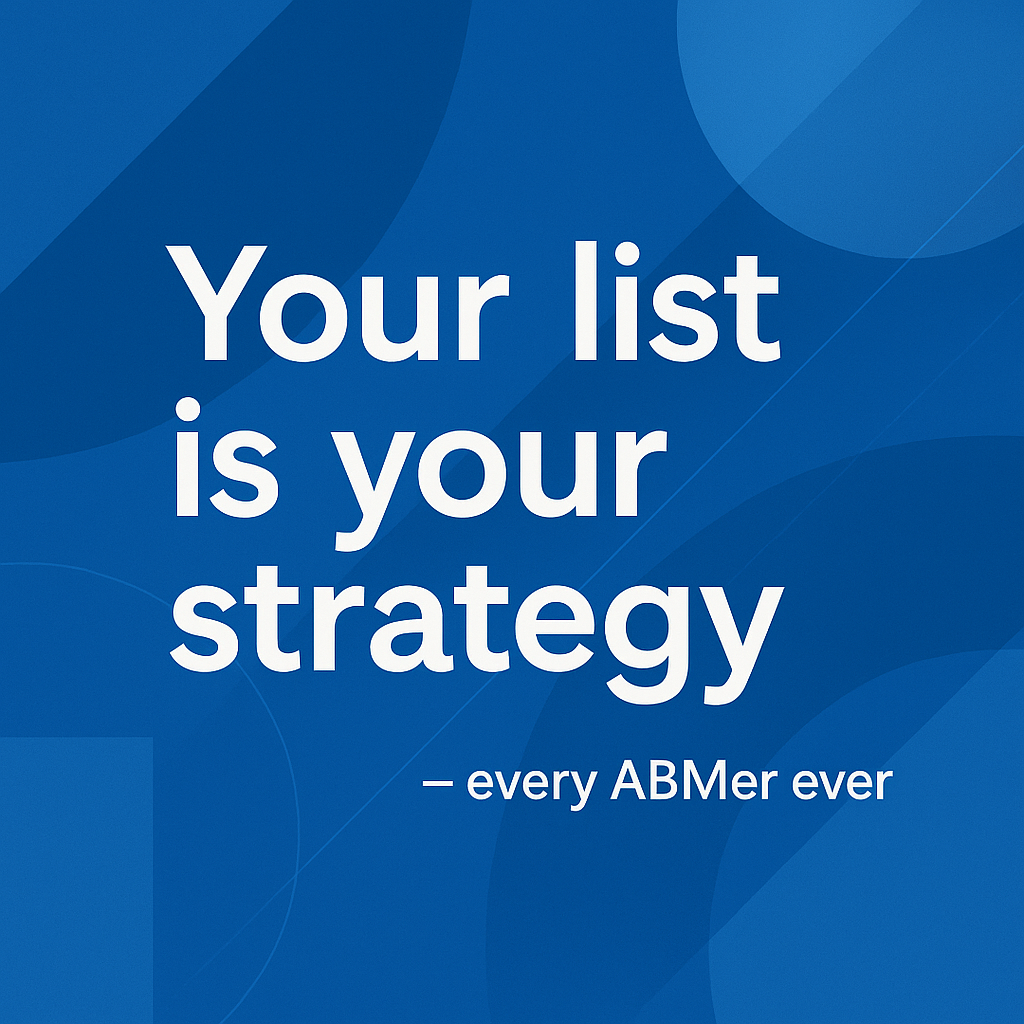
The foundation of account-based marketing success is choosing the right targets.
So your TAL should be perfect, because after all, your list is your strategy in account-based marketing.
To perfect your TAL, start by defining your Ideal Customer Profile (ICP) with absurd clarity using filters like company firmographics, pain points, tech stack, buying signals, and whatever else you can think of.
Remember that having more disqualification criteria is better than having more qualification criteria.
You can start by analyzing your best current customers and finding common traits (industry, size, problems solved) to hone your ICP.
Also, consider the thoughts of the sales team while defining your ICP and even the TAL. I mean, account-based marketing is all about the sales and marketing teams agreeing on one target account list.
Once the ICP is determined, use tools like Apollo, Clay, or even LinkedIn Sales Navigator to make a rough list of companies that match your ICP.
Also, identify the key stakeholders (buying committee/DMU) inside each account early.
Many B2B purchases involve multiple stakeholders from different departments, making it essential to map all relevant decision makers.
You can use tools like LinkedIn Sales Navigator for finding key stakeholders or mapping buying committees at an account.

You can also use Clay for the same:
Clay’s LinkedIn integration
Pulls data on employees at a given company.
Let’s you filter by seniority (C-level, VP, Director, Manager) or function (Marketing, Sales, IT, Finance).
Often used to map out buying committees in ABM.
Clay + Apollo / Clearbit / ZoomInfo connectors
These enrich a company’s domain with direct people data: names, job titles, emails, and LinkedIn URLs.
You can configure Clay to say: “Give me everyone at acme.com with titles containing ‘VP Marketing’ or ‘Head of RevOps’.”
Each provider has its own coverage; Clay centralizes them.
Clay’s built-in “Find People at Company” action
This is Clay’s own wrapper around the above data sources.
Input: company domain or LinkedIn URL and some other filters: 
Output: list of stakeholders with role, level, email (if available), and LinkedIn profile.
If you have access to intent signals (e.g. Bombora, 6sense) or even just Google Analytics and marketing automation data, watch for signs an account is “warming up,” like site visits, ad views, social interactions, etc.
Tracking this engagement helps you identify where an account is in the buying cycle, so you can time your outreach for when it’s most relevant.
By the way, for deanonymizing accounts visiting your site’s important pages (demo, pricing, trial signup), you can run LinkedIn text ads (these have extremely low CTR, so they create awareness but are dirt cheap!).
Then you can use ZenABM to see which accounts had a good amount of impressions:

A clever way to deanonymize site visitors, right?
Especially, when most IP-matching wrappers are hardly accurate:
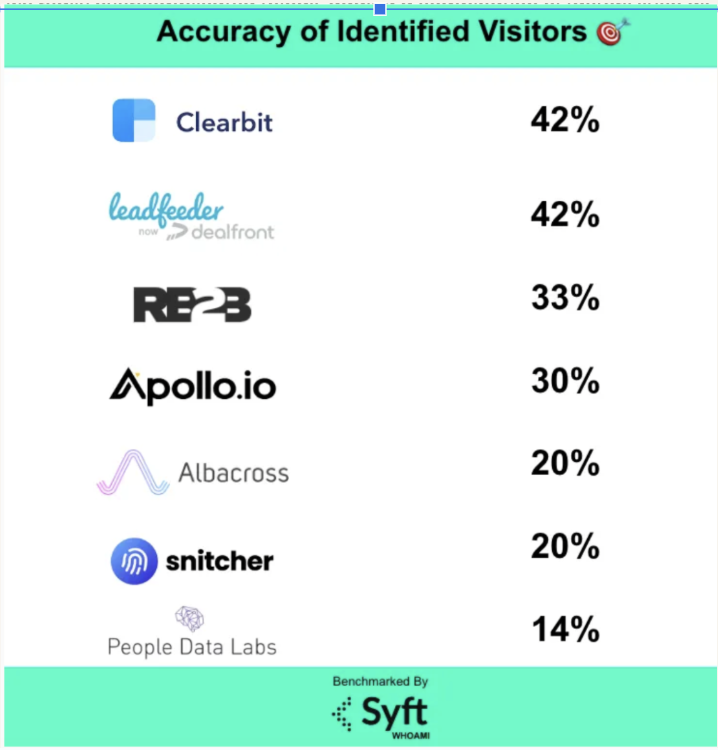
So, yeah, accounts showing such intent-signals (first-party or third-party) are the hottest ones that you should go after first. I’ll discuss more about this in the coming sections.
You can also add competitors’ customers in your TAL (don’t forget to check if they match the ICP). And Clay can help with that:

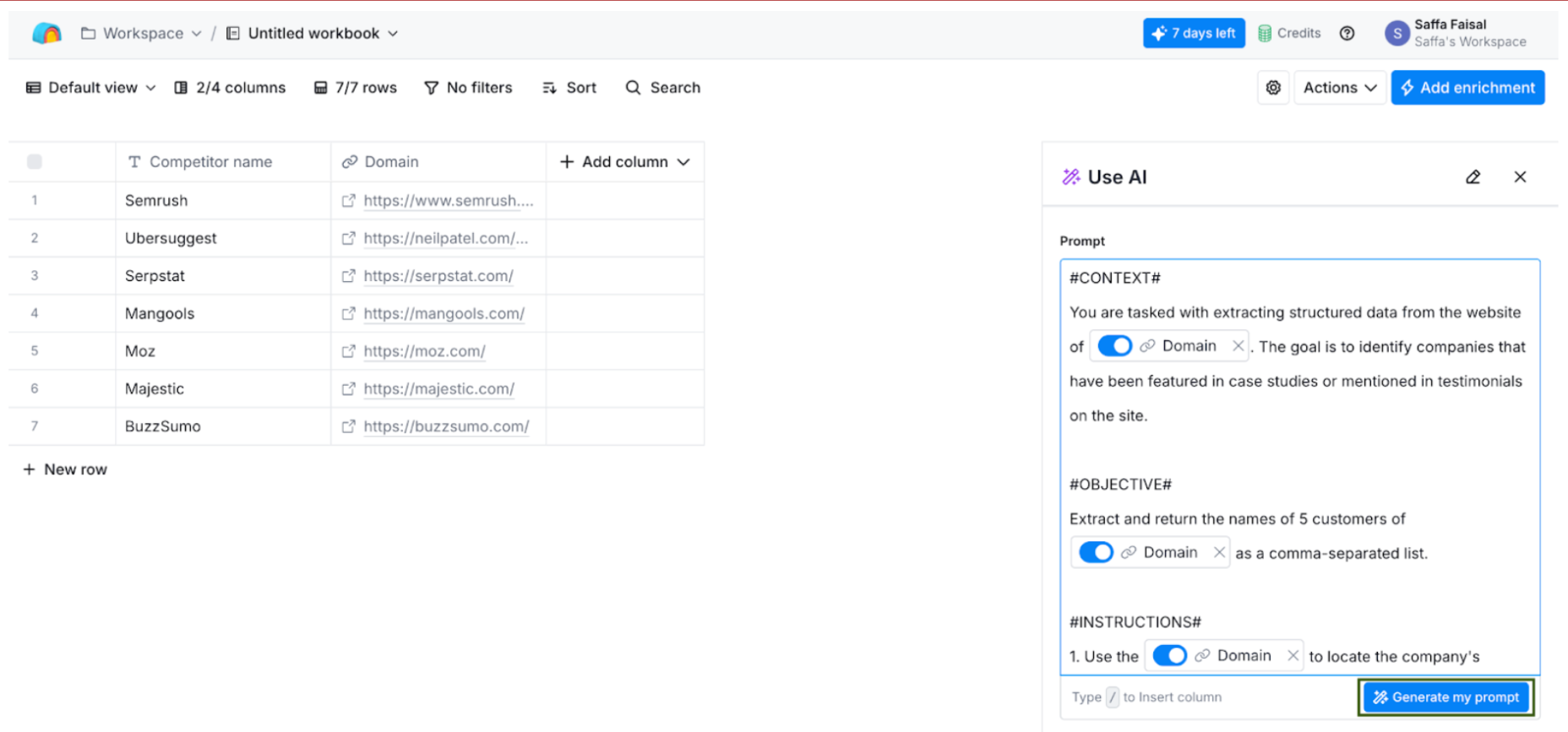
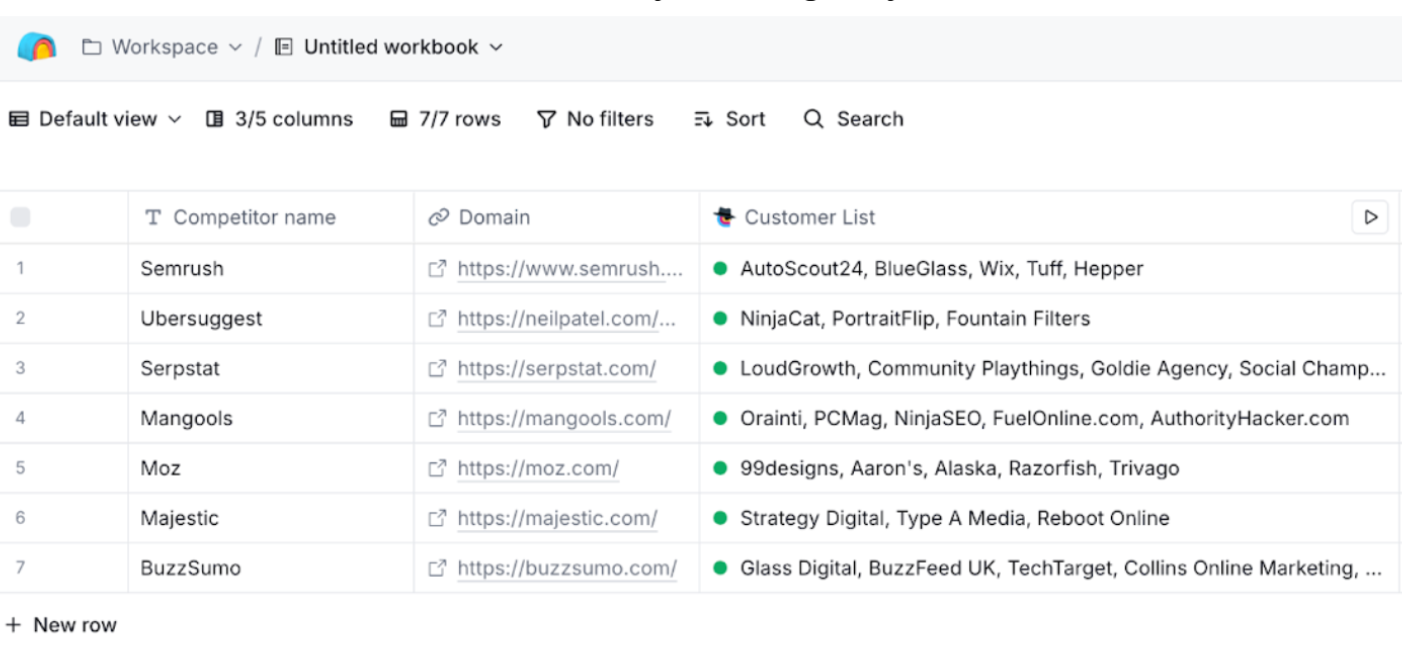 To prepare for advertising and later outreach, enrich the list by adding key decision-makers and their work emails.
To prepare for advertising and later outreach, enrich the list by adding key decision-makers and their work emails.Steven Brady built an account-based marketing campaign to reconnect with ex-Square colleagues who now fit his ICP.
Using LinkedIn Sales Navigator, he pulled ~50 first-degree connections, tracked their social intent with Trigify, and sent that data into Clay via webhook. Clay enriched each lead with 20+ attributes (title, industry, verified email), which then powered lead scoring, personalized messaging, campaign routing, and CRM updates.
The workflow:



Result?
Steve said this TAL set the path for his most successful account-based marketing campaign ever!
For a hard to reach audience, you definitely need to gear up with research and personalization.
I’m talking about diving into stuff like annual reports, press releases, their CEO’s last three LinkedIn posts, and that podcast interview the target CIO gave last month.
Your goal is to uncover trigger events, pain points, and personal insights that will make your outreach impossible to ignore.
For instance, know that the target account just acquired a smaller company?
That’s a talking point. Their CTO posted about a cybersecurity challenge?
That’s your opening to pitch how you solve it.
Start by building detailed profiles for each account and the stakeholders within:
GumGum, for instance, figured out that T-Mobile’s CEO loved Batman, and they made him a comic about TMobile!

LinkedIn is a goldmine for such research: what content do they share? Any common connections?
Social media can reveal vital personal info and what’s top-of-mind for them based on their posts and activity.
You can also build specific tools, like an ROI calculator related to their industry, or industry reports and how your solution can help them.
Lastly, don’t shoot generic or different types of ads again and again on the same account.
And don’t shoot a generic pitch into the DMs.
Personalize them with ZenABM.
ZenABM tracks company-level LinkedIn ad engagement for each ad campaign. So, you can tag each campaign with its intent (specific offer, feature, etc., being advertised by that ad), and ZenABM will group companies with similar intent together.

This way, you’ll know if an account is interested in your feature A or B, and you can start showing them even more BOFU ads.
Plus, now your BDR outreach will be more personalized.
They’ll know exactly what the account is interested in.
Userpilot did something similar:

Pro Tip: You can even go for 1:1 personalized ads on LinkedIn (yes, recently launched) that allow you to customize the intro text of Sponsored Content using profile fields like first name, job title, company name, and Industry.
Hard-to-reach audiences aren’t chilling in one channel waiting for you.
To engage them, you need to orchestrate a symphony of touches across multiple channels – all harmonized with the same personalized message.
Here’s how to play it:
First, have your sales folks (and execs, if possible) connect with target buyers and actually engage on LinkedIn.
No, not by pitching inMail right away, but by building rapport.
When it’s time for direct outreach, go for Sponsored InMail (now Message Ads)
Why?
LinkedIn InMail is a high-quality, low-frequency channel. It carries more weight than yet another email in their inbox.
Then go for cold emails and cold calls.
Here’s the outbound sequence that Becc Holland (CEO of Flip the Script – a sales enablement platform) suggests:

And, of course, run LinkedIn ads in parallel, and check progress with ZenABM.
In fact, you can set up an ABM stages framework to map each account’s buying journey.
It will help you decide what kind of marketing touches are needed and when, and when you should finally do a BDR outreach.
Here’s Kyle Poyar’s model to refer to for the same:

Here’s how Userpilot built its ABM stages framework, inspired by Kyle’s model:
You can build something similar.
Just don’t over-complicate it.
Only focus on touches and metrics that you can easily track.
Also, ZenABM can help you track these stages within the platform:

First of all, ensure you have the right email addresses.
Use Clay to find emails (we discussed that earlier in the article) and then validate them.
In your Clay table, click ‘Add column → Add enrichment’, search “validate email,” and pick an integration (e.g. ZeroBounce). Save it to verify which emails are valid. 

You can also use a tool like Hunter.io.
It does both finding and verification.

Once you have a proper email list, adopt these best practices:


Pro Tip: Use videos in your emails and also gamify your emails with tools like Mailmodo.

For hard-to-reach audiences that are also enterprise-level, you can surely go for direct mail and gifting.
Direct mail, in fact, has a 4.4% response rate, which is nearly 40× higher than email!
People have sent prospects everything from iPads pre-loaded with a custom video message and relevant content, to remote-control Porsches without the remote.
The executive had to book a meeting to get the controller (classic “give to get” move).
Also, you don’t just have to send gifts to executives.
I’d say consider some junior employees also on the executives’ teams.
One ABM team sent a locked puzzle to a senior executive, and its key to one of her junior employees.
And that got the meeting booked!
So, yeah, people send really thoughtful mails/gifts, and you can too.
My favorite story: A marketer at Sendoso found out her prospect was expecting a baby and had a bulldog, so she sent a tiny onesie that read “My Big Brother is a Bulldog.” The prospect flipped out (in a good way). Not only did she respond, she showed it off to colleagues, creating internal buzz. (Source)
Note: If you are worried about whether the addresses are correct, Jon Miller (Former CEO at Demandbase) says in his article, “Most databases don’t list postal addresses… so companies either ask prospects to confirm the address for gifting or use e-gifting instead… from a $5 gift card to a meal via Uber Eats to a charity donation in the prospect’s name to the institution od their choice.”
Hard-to-reach prospects rarely trust vendors, so lead with value.
They are, after all, hard-to-reach!
To keep winning with ABM, you must measure everything that matters:
Good news: You can see almost all of that in ZenABM (plug-and-play – no manual math needed).
ZenABM, not only tracks ad engagement at the company-level for each specific ad campaign:

But also matched ad-engaged companies to the ones in your CRM deals.
And then builds these dashboards:

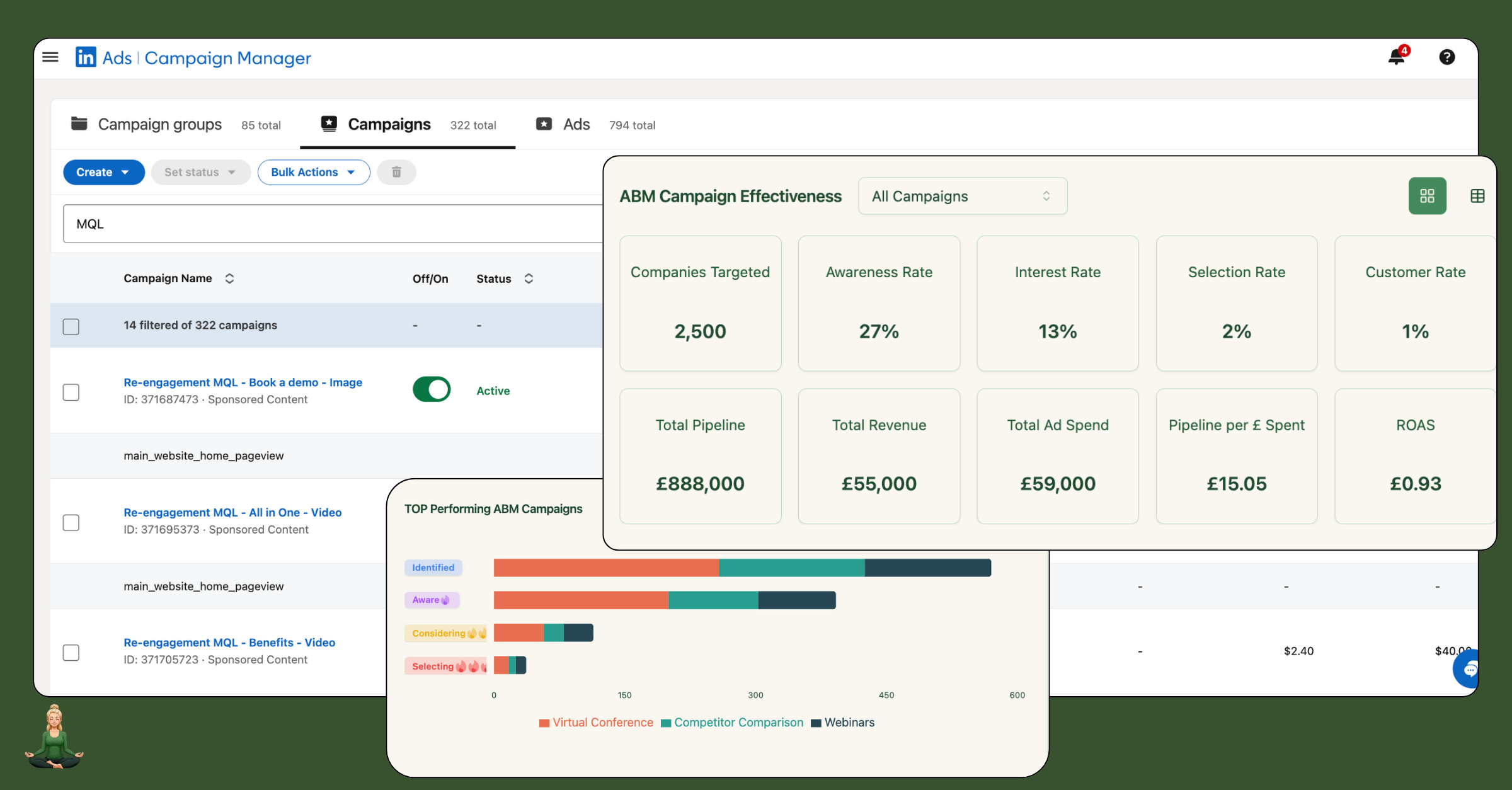



Also, it tracks the movement of each company through ABM stages, so there you have your pipeline velocity too, an can also see which stage has the friction.

This is the most important part, because measurement is not just about the after-success-celebration.
You must see the progress of all accounts through all stages and see where the accounts drop out of the journey or slow down, and fix that!
Winning over unreachable execs means ditching generic ABM playbooks.
You need surgical targeting, research-backed personalization, multi-channel precision, and value-led outreach.
Tools like ZenABM keep you honest by showing which accounts are truly moving through the funnel.
Try ZenABM for free now or book a demo!